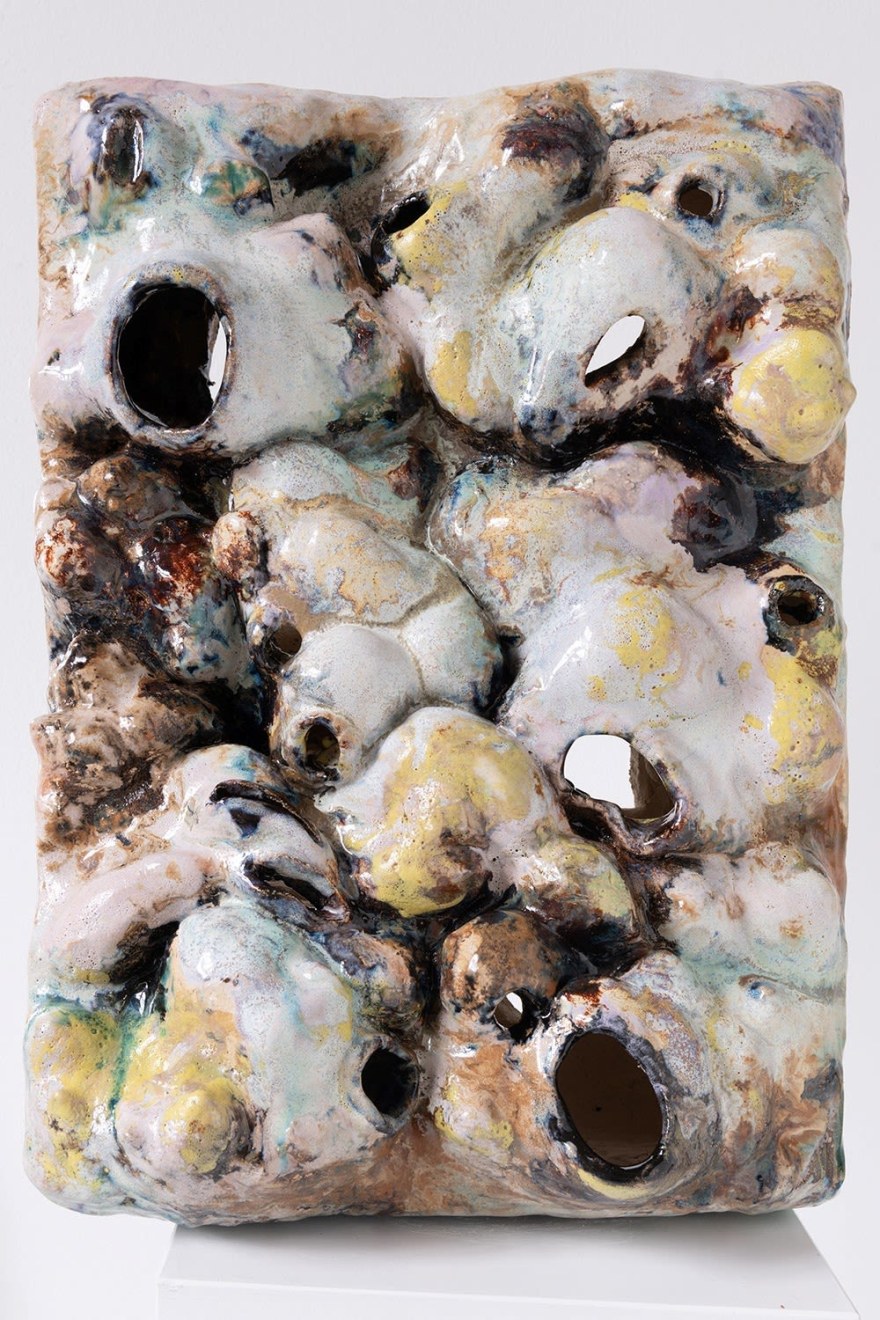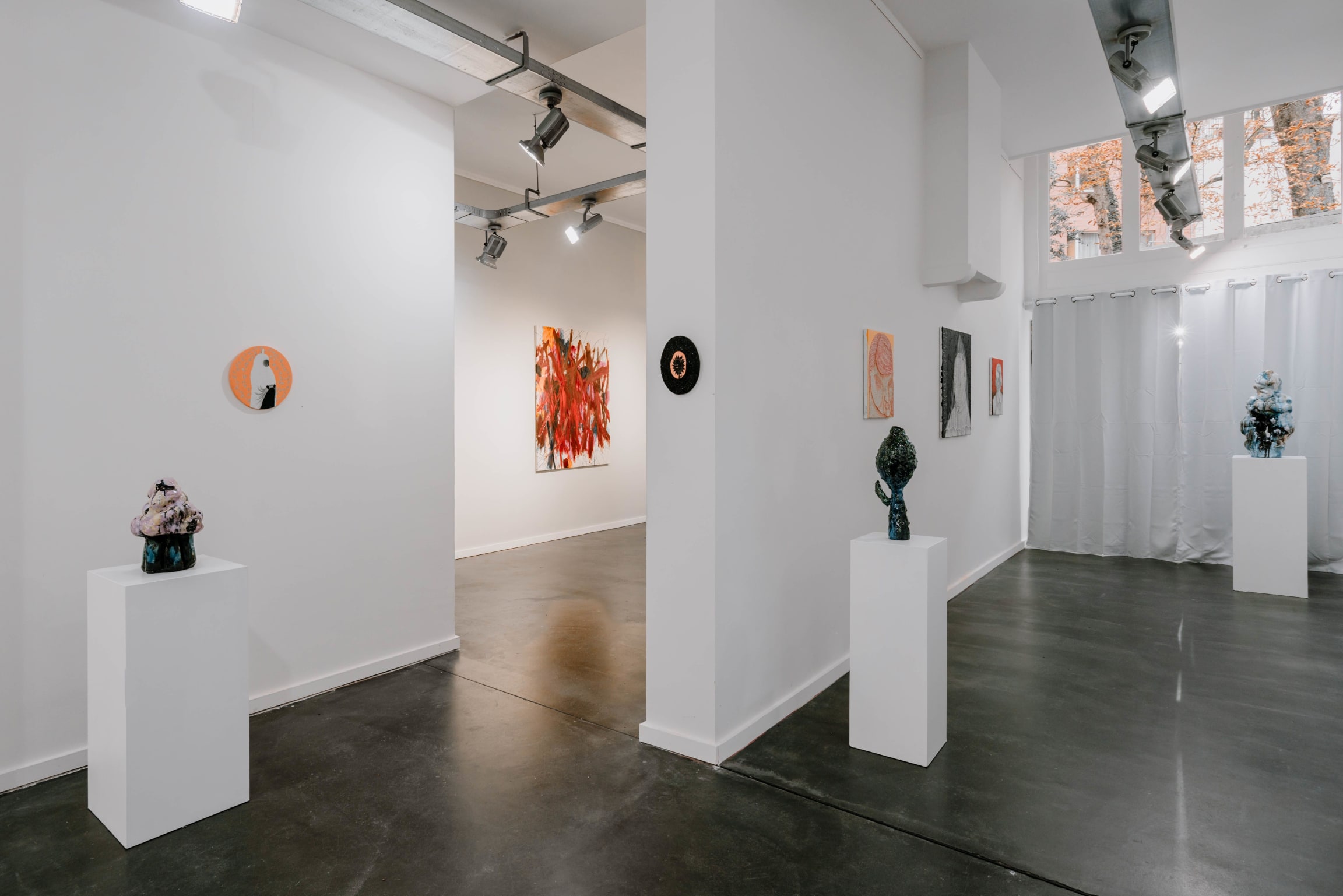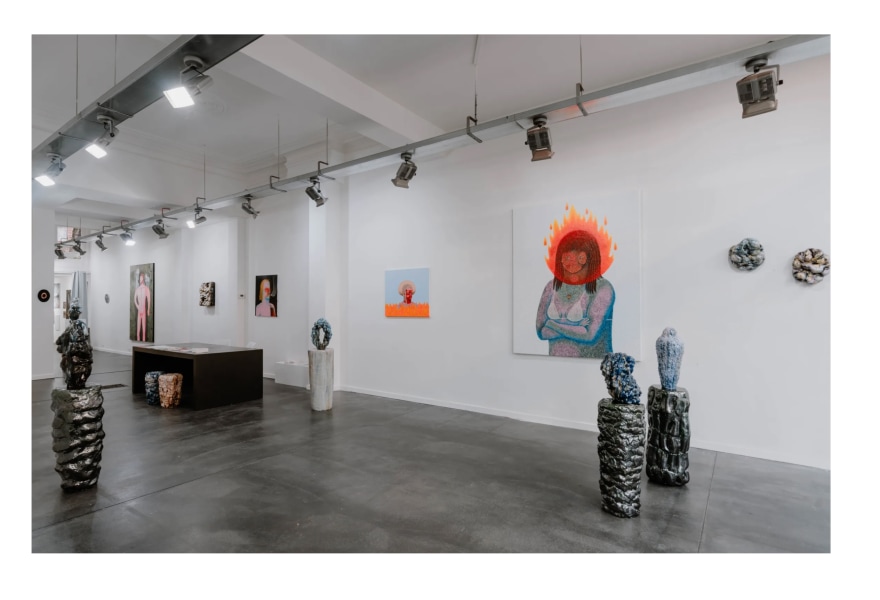25 november 2024, Yves Joris
in flux / in limbo: between decay and exaltation
When we walk through an exhibition, we often enter a world of transition, a space where artists transcend time and place. In the exhibition in flux / in limbo at NQ Gallery, Natasja Alers and Anne Silverstrand Forest have created a dialogue that balances between the fleeting and the fixed, the formless and the shaped, decay and exaltation. By placing their works side by side, a conversation arises about the state of being, the human body and the tension between matter and spirit.

Natasja Alers, Toevase #2, 2024, NQ Gallery
Silence in chaos: the ceramic work of Natasja Alers
In the work of Natasja Alers, we encounter amorphous shapes that seem to exist in a perpetual state of transformation. Her ceramic sculptures, often irregular and rugged in form, appear to inhabit the boundary between structure and dissolution. The glaze captures light in a way that interacts with the clay’s texture, creating a surface that breathes and lives, as though transforming in slow motion.
The holes and cracks in the material evoke associations with erosion and decay, as if the object has been subjected to natural forces for centuries. At the same time, the tactility and density of the clay suggest something earthy and physical, a primal force that holds the forms together. The ceramics seem to act as a metaphor for the human body, not as a fixed entity, but as an ever-changing collection of cells, substances and energies.
Philosophically, Alers touches on the concept of flux, as described by the ancient Greek philosopher Heraclitus. Heraclitus asserted that ‘everything flows’ and that nothing remains static. In her work, Alers embraces the flow of matter and disintegration of fixed forms as a natural and inevitable state. Her sculptures reflect a kind of quiet chaos, a mirror of the constant transformations occurring in nature and within ourselves.

Natasja Alers, Wall flora #1, 2024, NQ Gallery

Anne Silverstrand Forest, Uncommitted, 2024, NQ Gallery
A glimpse into limbo: the visionary figures of Anne Silverstrand Forest
Whereas Alers explores the organic and the earthly, Anne Silverstrand Forest focuses on the inner world and search for transcendence. Her paintings, such as one featuring orange flames and a figure seemingly lost in its own dimension, pose questions about the human soul and its position in a world full of contradictions. The figure depicted appears trapped between two worlds, a face gazing at us while simultaneously turning inward.
The burning orange and red flames suggest a kind of purgatory, a place of purification. This image of fire as a transitional ritual is deeply rooted in various cultures and religions and refers to humanity's eternal quest for purification and redemption. In the figure itself, we perceive melancholy and introspection, contrasting with the intensity of the surrounding flames. It is as if the figure is aware of its place in the universe, caught in a cycle of creation and destruction, much like the flames that constantly consume and renew themselves.
To Forest, the emphasis is on’ limbo’, the state of being suspended between life and death, consciousness and subconsciousness. The figure's facial expression reflects a calm acceptance of this state, as if the soul has reconciled itself with its fate. Forest is offering us not only a glimpse into humanity's inner struggles, but also a reflection on the concept of a liminal space in which one exists outside time and reality.

Anne Silverstrand Forest, Bedlam, 2024, NQ Gallery
Matter and spirit, earth and fire in dialogue
When we view the work of Alers and Forest alongside each other, we see how matter and spirit, earth and fire, engage into dialogue. Alers’ ceramic forms are heavy and grounded, connected to the earth and the cycle of decay and rebirth, while Forest’s figures possess a mystical, almost ethereal quality, evoking humanity’s striving for spiritual enlightenment. Together, they create a narrative about the human condition, confronting us with both the tangible reality of the body and elusive fragility of the spirit.
In this collaboration, questions arise about our own liminal experiences: moments of doubt, introspection and transformation. Alers’ work reminds us of the impermanence of our physical being, while Forest encourages us to reflect on our inner journey. Together, they form a portrait of humanity in flux – in limbo – caught in the eternal tension between holding on and letting go.
The power of the in-between
What makes in flux / in limbo so intriguing is the ability of both artists to visualise and render tangible the in-between, the elusive space between being and non-being. By placing their work side by side, the exhibition invites us to pause and reflect on the constant changes that surround us. Whether it is the material decay of a clay form or spiritual introspection of a figure in flames, we are reminded that nothing is ever fully fixed, that we are always in transition.
In this exhibition, the NQ Gallery challenges us to embrace our own existential limbo. Alers and Forest create work that brings us back to our core, to the awareness that we are merely passersby in a world that is constantly evolving. This makes the exhibition not only a visual experience, but also a reflection on our own lives and continuous state of flux.

in flux/in limbo, Natasja Alers & Anne Silverstrand Forest, NQ Gallery. Photo by Kimberley Dhollander
